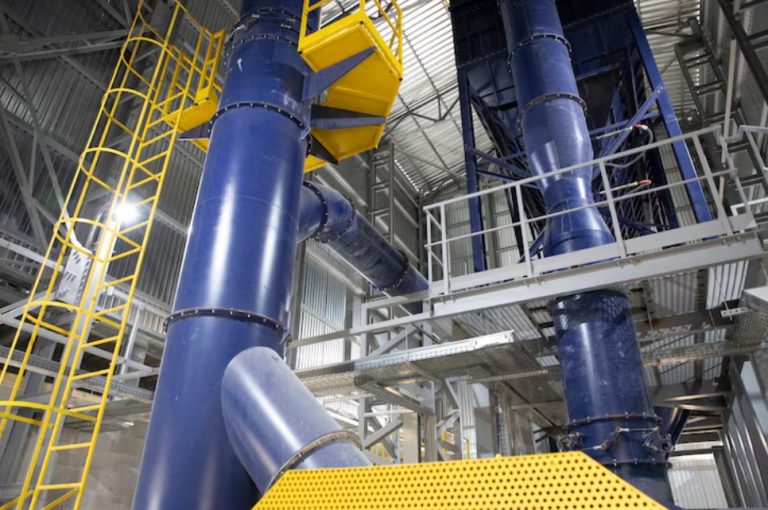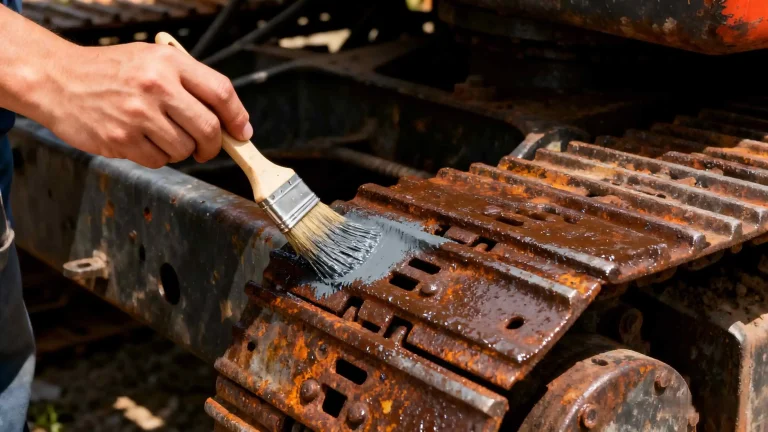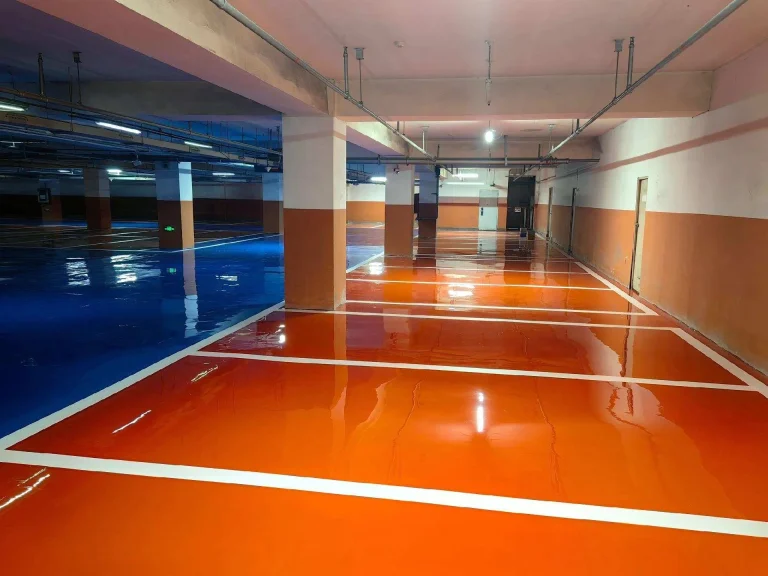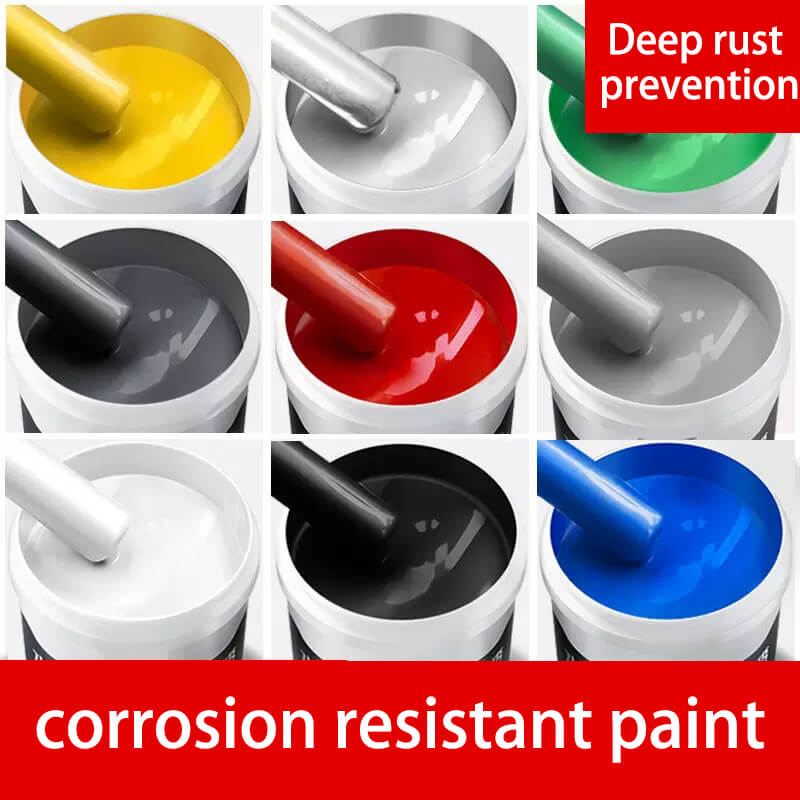
Rust is a sneaky problem. You might spot it creeping over an old car fender, turning shiny metal into a patchy, orange mess. In industries, though, rust isn’t just ugly—it’s a costly pain. It can chew through steel, wreck equipment, and rack up repair bills fast. That’s where anti-rust paint comes in, acting like a trusty shield for metal surfaces. Whether you’re running a factory, building bridges, or just curious about beating corrosion, this guide’s got you covered. We’ll break down what anti-rust paint is, the different kinds out there, how it fights rust, and where it’s saving the day in tough industrial settings. Stick with us—it might just save you a headache or two.
Understanding Anti-Rust Paint: The Basics
Anti-rust paint is a tough coating made to protect metal from corrosion. It’s like armor for steel or iron, keeping out water, air, and other rust-causing culprits. Unlike regular paint, which might look nice but peels under pressure, anti-rust paint is built to last. It sticks tight and holds strong against damp air, salty spray, or grimy factory conditions.
Why care? Corrosion hits industries hard. Reports say it costs over $2.5 trillion globally each year—that’s more than some countries’ economies. For folks dealing with metal, ignoring rust means endless fixes, lost money, and even safety risks. Anti-rust paint steps up as a smart fix, often keeping equipment solid for years. It’s not a cure-all, but it’s close when you see a pipeline still kicking after a decade of rough weather.
Here’s a tip from someone who’s seen it firsthand: don’t go cheap. Low-cost paints might seem like a deal, but they flake off fast, letting moisture sneak in. Quality anti-rust paint delivers top-notch corrosion protection right away. It clings like nobody’s business, fights peeling, and goes on easy—spray it, brush it, or roll it. You can use it as a base layer or final coat, which makes it handy for all sorts of jobs. Best of all, it’s a budget-friendly way to get long-lasting protection.
Here’s what stands out about anti-rust paint:
It stops corrosion in its tracks.
It grips metal tightly, no flaking.
It’s simple to apply with common tools.
It works as a primer or topcoat.
It saves cash while keeping things durable.
Exploring the Types of Anti-Rust Paint
Not every anti-rust paint is the same. Some are heavy-duty for brutal conditions; others are lighter for quick jobs. The type you pick depends on the environment and the metal you’re coating. Here’s a rundown of the main kinds, based on what folks in the industry use.
Barrier Coatings: The Tough Shield
Barrier coatings are the go-to for many. They form a solid wall between metal and stuff like water or chemicals. Epoxy-based ones are a favorite in factories. They harden into a tight, waterproof layer. Picture dipping a steel beam in epoxy—it dries, and nothing gets through easily.
From what I’ve seen in shops, these do great in drier spots. In super-wet places, though, they might need extra help. You can apply them with a spray, brush, or roller, and they stick like glue.
Sacrificial Coatings: Taking the Hit
Sacrificial coatings, like zinc-rich paints, work differently. They rust instead of your metal. Zinc steps up like a hero, corroding first to save the steel underneath. It’s like those old ships coated in zinc to fight off ocean salt.
Zinc-rich paints shine for outdoor gear or marine setups. They hold up against crazy weather, but they wear down over time, so you’ll need to reapply. Field tests show they can keep rust at bay for 10-15 years in decent conditions.
Inhibitive and Intumescent Coatings: Smart Defenders
Inhibitive paints use chemicals to slow rust right on the metal’s surface. Alkyd or acrylic versions work well for indoor gear, like factory machines. They’re not as heavy-duty but are solid for milder spots and often cheaper.
Intumescent coatings are a bit wild—they swell up when heated or wet, forming a foamy shield. They’re less common but great for places with fire risks, like near pipelines.
Here’s a quick table to compare, based on real-world use:
| Type | How It Works | Best For | Strengths | Weaknesses | Coverage (per coat) |
| Barrier (Epoxy) | Seals out moisture | Tough industrial spots | Sticks well, lasts long | Can crack if too thick | 6-8 m²/kg |
| Sacrificial (Zinc-Rich) | Rusts first | Outdoor, marine areas | Great in wet conditions | Needs reapplying | 4-6 m²/kg |
| Inhibitive (Alkyd) | Slows rust chemically | Indoor machines | Easy to use, affordable | Weaker in harsh spots | 8-10 m²/kg |
| Intumescent | Swells to protect | Fire-risk zones | Covers multiple threats | Costs more | 5-7 m²/kg |
This isn’t the whole picture—some paints mix these traits—but it’s a good start. Fun story: I once helped a friend coat his shop tools with an inhibitive paint. Years later, they’re still rust-free, even after a roof leak. Little victories like that make you respect this stuff.
The Science Behind It: Mechanisms of Anti-Rust Paint
So, how does anti-rust paint pull off its magic? It’s not just slapping on color—there’s serious science going on. Knowing how it works helps you choose the right paint and apply it without messing up. Trust me, a bad choice can turn a quick job into a total pain.
Barrier Mechanism: Locking Out Trouble
Most anti-rust paints start with a barrier trick. They form a tight film that blocks water and air. Epoxies are champs at this—their molecules bond so closely, it’s like a fortress. Lab tests show these can cut corrosion by 90% or more. But here’s the real talk: scratches or chips can let water sneak in. That’s why strong adhesion matters—it keeps the paint from peeling off.
These paints dry fast, too. They’re touch-dry in two hours at room temp and fully hard in 24. That means you’re back to work quick.
Sacrificial and Cathodic Protection
Sacrificial coatings play a different game. They use electrochemistry—zinc in the paint rusts before the metal does. It’s called cathodic protection, moving electrons to stop corrosion. This is huge for ships or offshore rigs, where salty water would eat steel alive.
Real-world data backs this up. A pipeline study showed zinc-rich coatings added 20 years to service life when applied right. They’re best where water’s always present, like in marine settings.
Inhibitive Actions: Slowing Things Down
Inhibitive paints add chemicals that mess with the rust process. Phosphates, for example, create a protective layer on the metal. It’s less intense than barriers but works great for machinery that vibrates a lot, where thick coatings might crack.
Hybrid paints mix these tricks—like an epoxy with inhibitive additives for extra protection. They’re a smart pick for cost-effective, long-lasting results.
Quick detour: I’ve seen fishing boats coated with barrier and sacrificial mixes. They handle brutal storms that would trash uncoated hulls in months. Nature’s tough, but these paints are tougher.
Industrial Applications: Where Anti-Rust Paint Makes a Difference
Let’s get down to brass tacks. Anti-rust paint isn’t just sitting pretty—it’s out there saving critical gear. From giant steel frames to small outdoor parts, it’s got a lot of ground to cover.
Protecting Steel Structures and Construction Sites
Steel structures—like bridges or building frames—take a beating from rain, wind, and grime. Anti-rust paint stops oxidation that could weaken them. Think of a highway overpass in a rainy city: without protection, winter road salt speeds up rust, costing millions to fix. With top-tier anti-corrosion performance, these paints can add 15-20 years to a structure’s life, based on engineering stats.
In construction, rollers make it easy to coat big surfaces, hitting 6-8 square meters per kilo.
Keeping Machinery and Equipment Running
Factories are rough on gear. Machines face oils, steam, and constant wear. Anti-rust paint keeps them from locking up. In auto plants, for example, coating tools stops rust-related shutdowns. I’ve heard of factories saving thousands by avoiding those hiccups.
It’s easy to apply, too. Spray it during a maintenance break, and you’re back in action fast.
Pipelines, Tanks, and Energy Sector Needs
Pipelines moving oil or water are rust magnets. Anti-rust coatings, like epoxy barriers, protect them inside and out. Storage tanks? Same story—zinc-rich paints guard the outside against weather. In the energy world, offshore rigs rely on these for ships and platforms, fighting relentless salt spray.
One real case: a coastal pipeline coated with heavy-duty anti-rust paint survived a hurricane season without a scratch. Unprotected sections? They needed emergency repairs.
Marine and Outdoor Challenges
Ships and offshore setups face the worst conditions—crashing waves, endless saltwater. Anti-rust paint here often uses sacrificial zinc for cathodic protection. Outdoor parts, like fences or solar panel frames, need lighter coatings but still demand that no-peel adhesion.
Marine data shows these paints cut maintenance costs by 30-40%. Using them as both primer and topcoat keeps things simple—no need for extra layers.
These uses aren’t just talk—they’re proven in the field. But pros mess up too. Skipping surface prep can ruin adhesion. I’ve seen it happen, and it’s not pretty.
Introducing Konaz: Your Go-To Anti-Rust Paint Supplier
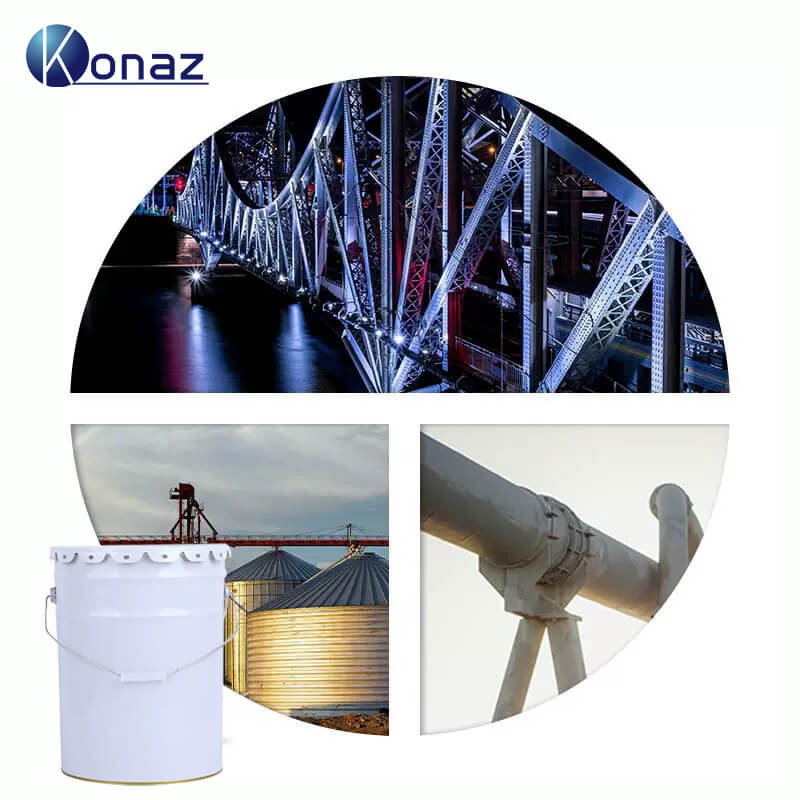
When you need reliable anti-rust paint, Konaz is a name to know. Based in Foshan, China, Konaz Technology Co., Ltd. focuses on high-performance coatings for industrial challenges. Their 3,000-square-meter facility, packed with over 30 advanced machines, pumps out up to 1,000 tons a year. Quality is their thing.
Their anti-rust paint delivers what tough jobs need:
Stellar corrosion protection.
Rock-hard adhesion that fights flaking.
Easy application with spray, brush, or roller.
Works as a primer or topcoat.
Lasts up to 12 months in storage if kept cool and dry.
Konaz is all about innovation, boosting efficiency, and being eco-friendly. They serve manufacturers, exporters, and everyone in between. If you need a supplier that gets industrial demands, Konaz is solid.
Conclusion
To wrap it up, anti-rust paint is a game-changer for metal in rough environments. From barriers locking out moisture to sacrificial coatings taking the hit, it keeps industries running smoothly. Whether you’re protecting a bridge, a factory machine, or an offshore rig, this stuff delivers. Knowing the types and how they work lets you make smart choices. Apply it right, and rust becomes a problem for someone else. It’s simple protection with a big payoff.
Frequently Asked Questions (FAQs)
What’s anti-rust paint, and why’s it a must for my factory?
Anti-rust paint is a coating that protects metal from rust caused by water, air, or salts. In factories, it’s a lifesaver. Unprotected metal rusts fast, leading to pricey repairs or safety issues. Coating machinery with anti-rust paint gives strong adhesion and lasting protection, keeping things running without costly pauses.
What kinds of anti-rust paint can I get?
You’ve got barrier coatings like epoxies that seal surfaces, zinc-rich sacrificial paints that rust first, and inhibitive ones that slow corrosion chemically. Each fits different needs—barriers for tough spots, sacrificial for oceans. The right anti-rust paint depends on your setup, but they’re all easy to apply and budget-friendly.
How does anti-rust paint stop corrosion?
It works in a few ways. Barriers block water and air. Sacrificial coatings use zinc to rust instead of your metal. Inhibitives add chemicals to slow reactions. Together, they keep steel structures rust-free for years. Some dry in two hours, making anti-rust paint a quick fix for busy sites.
Where’s anti-rust paint used most in industry?
It’s big in steel structures, pipelines, tanks, ships, and outdoor parts. Offshore rigs use anti-rust paint to fight salt spray. It’s great for machinery, too, preventing flaking. In energy or marine work, it cuts maintenance costs by protecting against harsh weather.
Is anti-rust paint easy to use, and how long does it hold up?
Yes, it’s user-friendly—apply it with a spray, brush, or roller. With proper prep, anti-rust paint lasts 15-20 years in moderate conditions. Its strong adhesion prevents peeling, making it a reliable choice for industrial or outdoor jobs.

